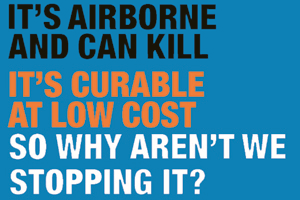"In the space of 17 years, 51 million people have been successfully treated and cared for according to WHO recommendations. Without that treatment, 20 million people would have died," says Dr Mario Raviglione, Director of the WHO Stop TB Department. "This milestone reflects the commitment of governments to transform the fight against TB."
The achievements have been secured by leadership in endemic countries and international support, but today WHO warned that the global fight against the disease remains fragile.
"The momentum to break this disease is in real danger. We are now at a crossroads between TB elimination within our lifetime, and millions more TB deaths," says Dr Raviglione.
A snapshot of the global TB pandemic and gaps in funding was published today by the Stop TB Partnership and WHO.
Data from 204 countries and territories
New data in the WHO Global Tuberculosis Report 2012 confirm that TB remains a major infectious killer today. The findings show:
The report also highlights country successes - among them Cambodia which has seen a 45% drop in TB prevalence between 2002 and 2011 - and, in all, it features data from 204 countries and territories and covers all aspects of TB, including multidrug-resistant TB (MDR-TB), TB/HIV, research and development (R&D) and TB financing.
There is praise in the report for the worldwide roll-out of a new diagnostic device that can test patients for TB, including drug-resistant TB, in just 100 minutes. The fully automated nucleic acid amplification test (NAAT), which can diagnose TB and rifampicin-resistant disease, is now available in 67 low- and middle-income countries. Adoption of the ‘while you wait’ test is expected to further accelerate following a recent 41% fall in the price of the test.
The report also points to the promise of medical breakthroughs from new TB drugs - the first in over 40 years - which could be on the market as early as 2013. Indeed, tools to prevent, detect and treat all forms of TB are steadily advancing through the R&D pipeline, says the report.
Further down the line, progress means that a new TB vaccine and a ‘point-of-care’ diagnostic could be available within the next decade.
But delivering new tools comes at a cost - and the report notes that there is a US$ 1.4 billion funding gap per year for research and development.
US $3 billion per year funding gap could prevent TB care progress
Apart from the US $1.4 billion funding gap for research, there is a further US$ 3 billion per year funding shortfall between 2013 and 2015 which could have severe consequences for TB control, the report warns.
"This gap threatens to hold back delivery of TB care to patients and weaken measures that prevent and control the spread of TB, with low income countries at most risk," said Dr Katherine Floyd, who coordinated the report team. To address this, WHO is calling for targeted international donor funding and continued investments by countries themselves to safeguard recent gains and ensure continued progress.
